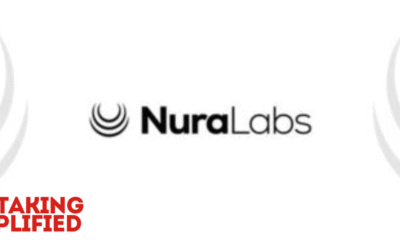Business
How Businesses Prepare for New Hires and Why It Matters for Job Seekers

Every year, as businesses close the books on the final quarter and prepare for a fresh start in the new fiscal year, something important is happening behind the scenes—companies are ramping up hiring efforts to bring in new talent. The end of Q3 and Q4 are critical periods for organizations, as they finalize budgets, map out strategic goals, and assess workforce needs. For job seekers, however, not understanding this hiring cycle could mean missing out on golden opportunities.
A.J. Mizes, CEO & Founder of The Human Reach, offers advice that insiders in business know well: timing your job search to align with company hiring periods can make all the difference. “Job seekers should strategically begin their search in Q3 or Q4. Companies often increase hiring during these periods to prepare for the new fiscal year,” says Mizes. This isn’t just a broad piece of advice—it’s rooted in the real, internal mechanics of how businesses operate.
The Business Perspective
For those on the outside looking in, hiring may seem like a matter of posting a job ad, reviewing resumes, and choosing the best candidate. But from the inside, companies know it’s a far more complex process. Preparing to onboard new employees, particularly at the start of the year, involves much more than finding room in the payroll or offering attractive benefits.
First, there’s the strategic assessment that takes place during Q3 and Q4. Business leaders aren’t just looking to fill empty desks—they’re analyzing their goals for the upcoming year, considering upcoming projects, and identifying the skills gaps that need to be addressed. Workforce planning isn’t a static task; it’s a dynamic process that ensures every new hire brings value to the team. By the time the holidays roll around, many businesses have already mapped out their hiring needs for the first quarter.
“We’re not just hiring for today’s tasks,” says one HR manager at a mid-sized tech firm. “We’re hiring for next year’s goals. We have to think about what skills we’ll need six months from now, what projects are on the horizon, and how a new employee will fit into the broader team structure. It’s like playing chess—you have to think several moves ahead.”
The Perfect Time to Apply
This is why job seekers who start their search late in the year have a better chance of landing a position. During Q3 and Q4, companies are not only finalizing their budgets but are also looking to onboard talent ahead of major holiday lulls. With the fiscal year reset on the horizon, there’s a surge in hiring efforts, and the competition among applicants tends to be lower as many people wait until the new year to apply.
“Starting your search during these windows can significantly improve your odds of securing a position in a more timely manner,” says Mizes. Internally, businesses know they need to hit the ground running at the start of the year, so they often aim to fill critical roles before holiday vacations begin. Job seekers who understand this rhythm are more likely to align their efforts with a company’s needs, giving themselves an edge over those who wait until January to submit applications.
Onboarding New Hires
Once the decision to hire is made, the real work begins for both the company and the new employee. For businesses, onboarding isn’t just about providing a desk and a login to the company’s systems—it’s about integrating the new hire into the fabric of the organization. During Q4, managers are often preparing for this process well in advance, ensuring that new employees can hit the ground running in the new year.
“Once you’ve landed the job, go beyond the basics,” advises Mizes. This means immersing yourself in understanding the company’s strategic goals and your role within that framework. From the business side, managers are hoping to see new employees add value from day one, and the best way to do that is through early engagement. Companies often establish clear objectives for new hires and look for them to bring fresh ideas and energy to the table.
One business leader explains, “We expect our new hires to get involved immediately—not just with their day-to-day tasks but with understanding how they can contribute to the company’s bigger picture. It’s not just about completing a project; it’s about understanding where that project fits into our goals for the year.”
The Win-Win of Strategic Hiring
For companies, hiring new staff is a major investment—of time, resources, and future potential. The end of the year is when many of those investments are finalized, making Q3 and Q4 critical periods for workforce planning. From conducting interviews to designing onboarding programs, businesses spend these months laying the groundwork for the coming year. And for job seekers, this is where understanding the timing of the hiring cycle pays off.
As A.J. Mizes points out, “The job search can be difficult to navigate, but understanding which times are the best to begin planting roots in the corporate world makes all the difference.” For businesses, finding the right person at the right time can mean the difference between a successful start to the year and a missed opportunity. For job seekers, aligning with that internal timeline can open doors that might otherwise stay closed.
Ultimately, both sides benefit from understanding the nuances of timing. For organizations, it’s about more than just filling a role—it’s about strategically building a team that can execute on the company’s goals. For job seekers, it’s about recognizing when those opportunities are most likely to present themselves and positioning yourself as the right candidate at the right time.
Photo by Marten Bjork
-

 Press Release4 days ago
Press Release4 days agoNura Labs Files Revolutionary Patent: AI-Powered Wallet Solves the $180 Billion Crypto Staking Complexity Crisis
-

 Press Release2 days ago
Press Release2 days agoGlobal Compound Feeds and Additives Industry Report: Market Expansion and Competitive Insights to 2035
-

 Technology2 days ago
Technology2 days agoWhat to Know Before Switching Cell Phone Network Services in 2025
-

 Press Release3 hours ago
Press Release3 hours agoCrypto WINNAZ Launches First On-Chain Yield Engine for Meme Coins, Enabling 20x–300x Returns














